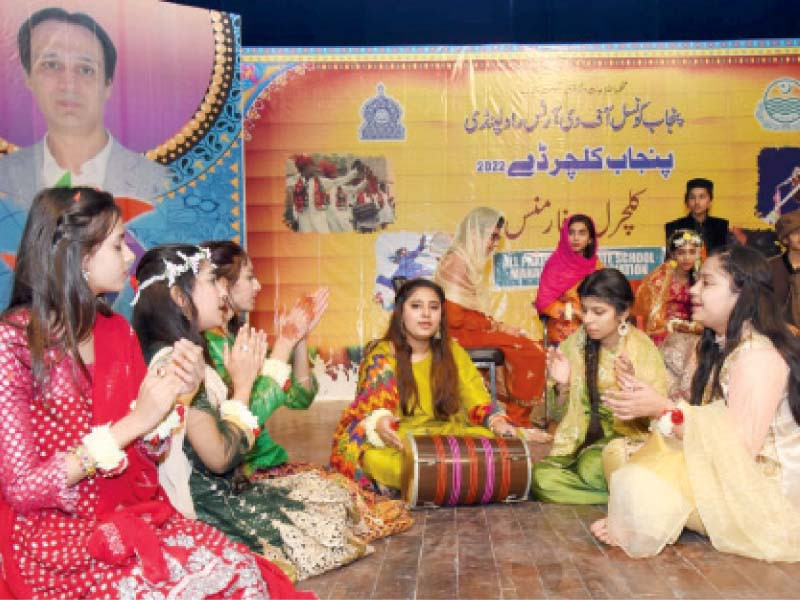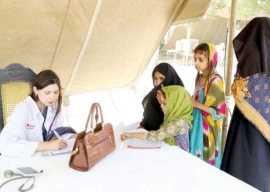
Punjab Culture Day was celebrated with great zeal and enthusiasm in all government schools across the Rawalpindi district.
On the occasion, government school teachers and students in the district donned traditional Punjabi attire such as dhoti, shalwar, kurta, kalah, turban (Pagri), and khhusas. There were no regular teaching activities on this day, as the focus was solely on celebrating the rich cultural heritage of Punjab.
Teachers were observed gathering in groups and enjoying hookah. Additionally, some teachers brought beds into the schools and placed embroidered round pillows on them. In line with the cultural theme of the day, traditional Punjabi food such as greens, cornbread, and lassi continued to be served in schools.
Students who were dressed in traditional Punjabi attire took part in cultural activities, including traditional dances such as bhangras, gaday, and ludees. They also played traditional Punjab games like Gali Danda, Stapo, Langra Sher, Pitho Garam, Kabaddi, and Volleyball. To further promote Punjabi culture, traditional Punjabi desi food was also prepared and
Female teachers in girls' schools joined their students in celebrating Punjab Culture Day by wearing traditional Punjabi attire. These teachers prepared authentic Punjabi dishes, such as greens and cornbread, and made lassi from yogurt in chaati. The female students also followed the tradition of wearing paranday in their hair, along with kurtay and gararay. The girls' schools remained lively as students engaged in various activities such as jumping rope and playing stapo under the supervision of female teachers.
Speech competitions were conducted as part of the Punjab Culture Day celebrations, where Basharat Iqbal Raja, Muhammad Shafiq Bhalwalia, and Akhyan Gul, leaders of the teachers' union, delivered speeches on the significance of the day. They emphasized that the celebration of Punjab Culture Day in schools would promote the use of Punjabi as a mother tongue. The tradition of Punjab has existed for centuries, and promoting education in mother tongues such as Punjabi, Sindhi, Pashto, Balochi, Kashmiri, and Gilgati up to the primary level would yield positive outcomes in increasing the literacy rate, they added.
Published in The Express Tribune, March 15th, 2023.








1726722687-0/Express-Tribune-Web-(9)1726722687-0-270x192.webp)









COMMENTS
Comments are moderated and generally will be posted if they are on-topic and not abusive.
For more information, please see our Comments FAQ